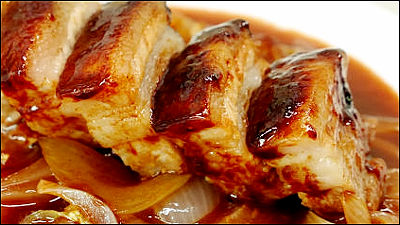I watched Japanese sake brewery handed down by young Du Fu of my twenties at the Kyotango Sake brewery "Takeno Shuzo" ~ The second part ~

PrequelContinue to follow the state of Japanese sake brewing at the Takeo Sake Brewery at Kyotango-shi in Kyoto Prefecture and Kyotango-shi.
What to do from early in the morning is the work of steaming a large amount of rice to become sake, the work of putting the rice into sake as sake which is being brewed and making it rice koji which will not be used for the sake. It was quite hard work such as carrying rice steamed with a huge big pot in several people and it became clear that it was a person's hand hanging on every single journey.
The work scenery in the morning warehouse where the shrine and the cold are gone is from the following.Happy person eq ThinkFree
http://www.yasakaturu.co.jp/
Work starts from around 6 in the morning. Weak rain had fallen, but the snow remained without melting.
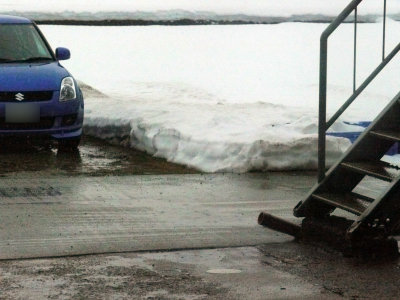
The early morning sake brewery is cold, and the sound of the boiler and the sound of work are echoing in the fresh air.
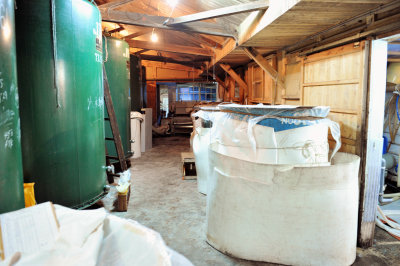
YouTube - Early morning wine store
It was this bamboo that first came to the liquor store. For ingredient analysis, sake is extracted by putting small amounts of mash which is currently being loaded.
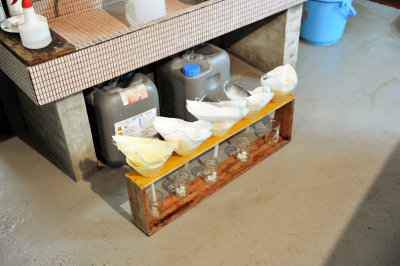
The shuttle that boils the water that I use a lot of work has been blowing over for a while so I am seeing the appearance of Mr. Takeuchi 's rower.
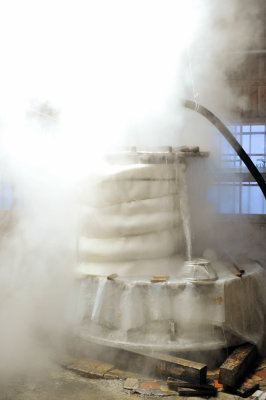
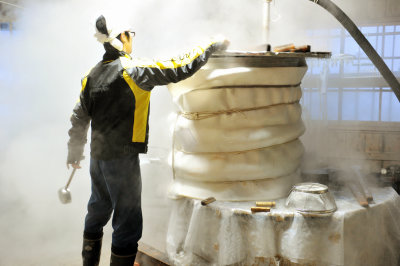
Even in the cold storehouse, this area is warm because there is steamy steam.

Kuranjo prepare a kettle to steam rice. It is a bundle of the straws that I have in my hands and it removes the rice that caught in the net. I heard that you are using straw because the net gets hurt when using metal tools.
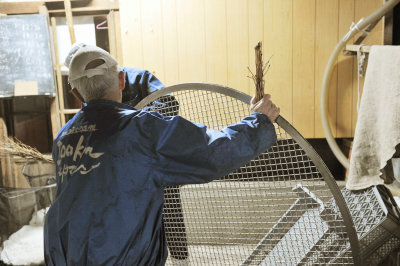
When cleaning is finished set in a pot.

Completion is done when cloth is put on it.

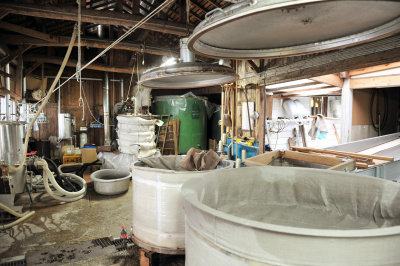
I steamed rice which I washed rice yesterday.
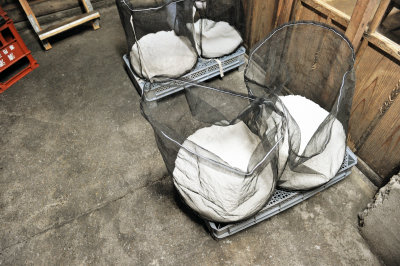

Daisy and input.
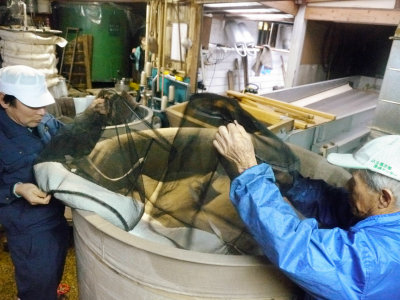
Put the rice on one side, rice the rice, place another piece of cloth and bring rice to the other side. It is because rice milling rice polishing ratio is different by cloth.

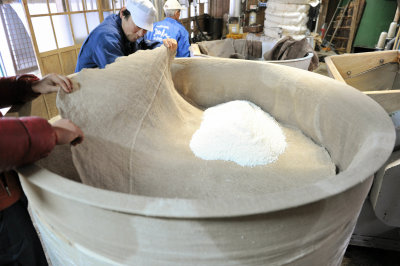
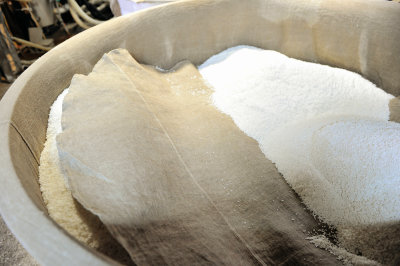
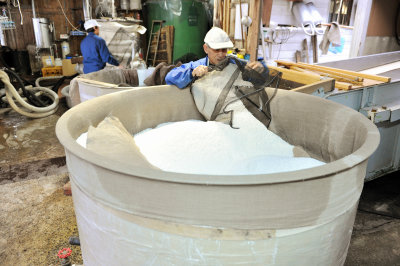
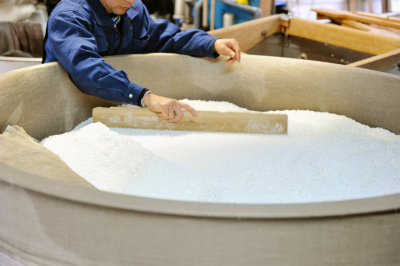
After finishing filling the rice, cover the surface with a cloth.
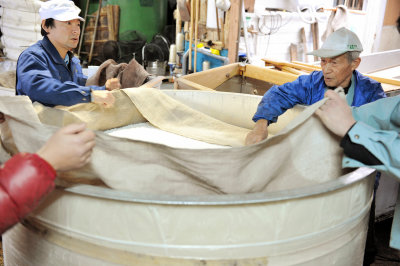
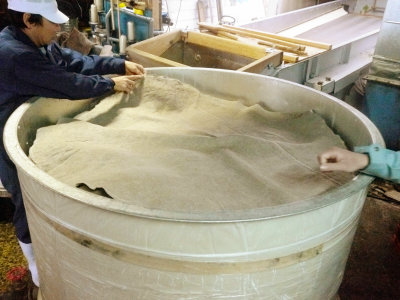
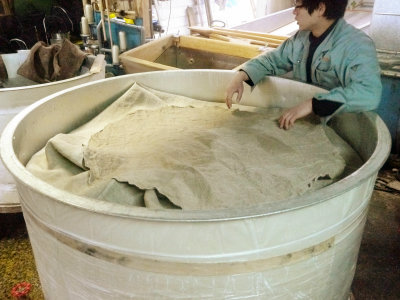
Preparation before steaming is completed.
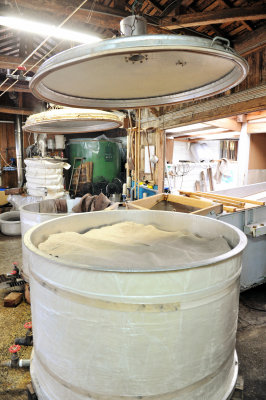
Close the lid and secure it firmly with the rope.

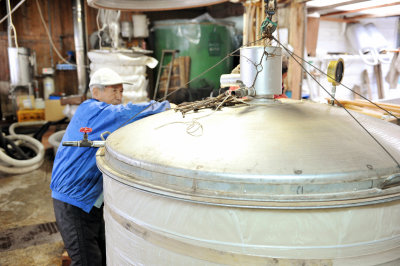
Once you have connected the tubes so that steam enters the kettle, it will be steaming.
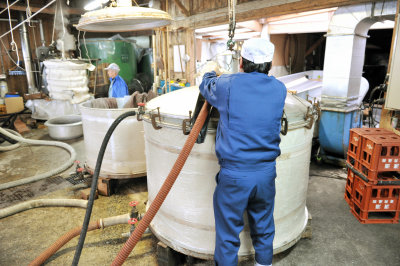
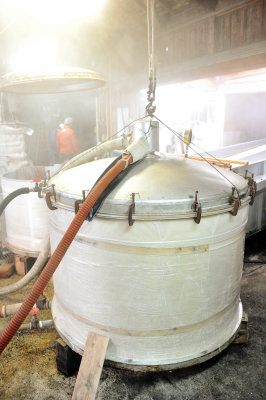
Steam will be discharged outside the warehouse. People who have a smoked image of smoked sake brew may also get inside but that was steam to steam rice.

Breakfast at the timing to wait for steaming up. Rice and miso soup, a few leftovers leftovers last night. It means that it is something you purchased myself. It feels like a clean and correct Japanese breakfast.
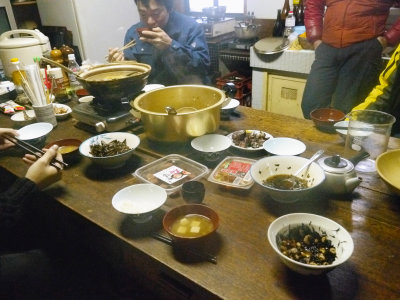
Steaming is completed after about 60 minutes. The overwhelming amount of rice was cooked.

A shocking visual that scoops out the rice. In order to move this amount of rice it is not enough for this.
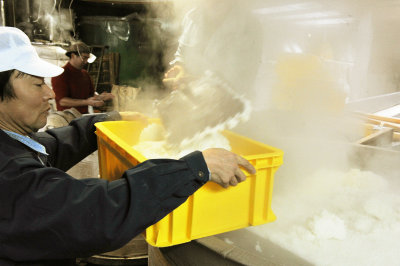

The rice in a yellow box will be carried to the front of the room.
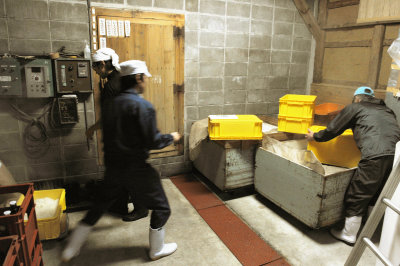
Before using the yellow box firmly disinfect with hot water.
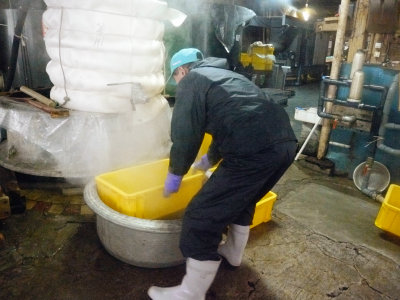
In order to grasp the amount of water of rice etc, measure the weight of rice before entering the room.
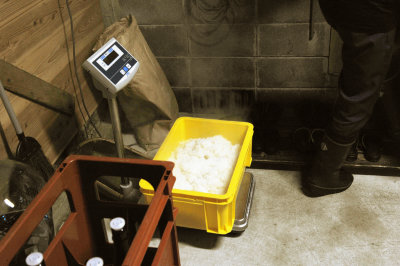
After weighing, transfer the rice to this big box and let it cool.
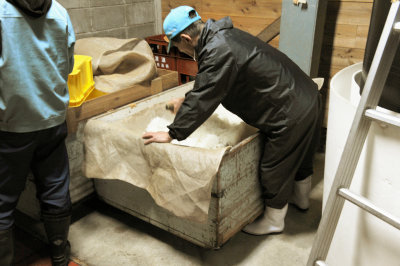

In addition to rice koji steamed rice steamed up this morning, it includes the amount to be added to liquor mother. Before throwing in, insert a thermometer and see if it's just right.

We will bring the box to cool the rice to the front of the liquor's tank.
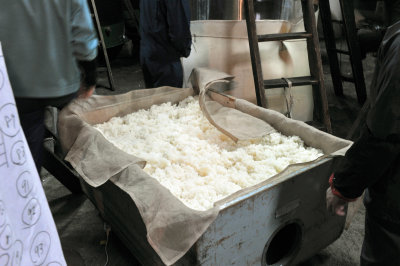
Grasp the edges and ends of the cloth and put them in the tank.

Mix well with liquor after entering rice.
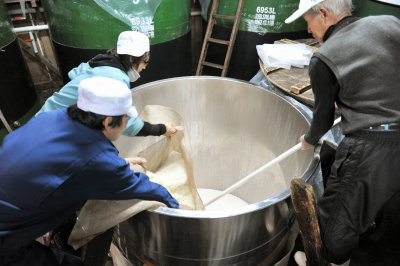
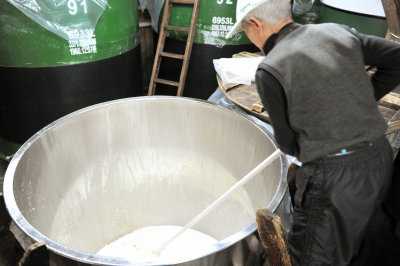
Wrap a white cloth on the outside to keep the liquor warm. The big tank has a black cover to cool down the liquor, but it is used for the common purpose of keeping the temperature at which the yeast's function is just right, at a constant temperature.
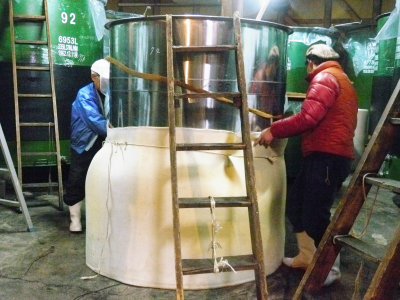
Next, in order to have you show the making of rice koji in the room (Muro), I had you go into the room specially. In contrast to the cold inside of the warehouse, this is warm like a sauna.
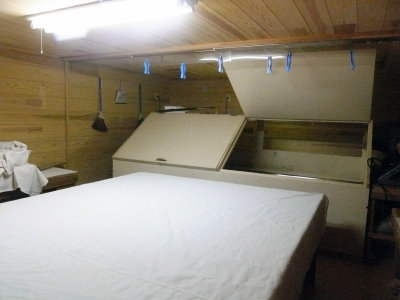

The inside of the room was warmed by electric heater and panel heater.
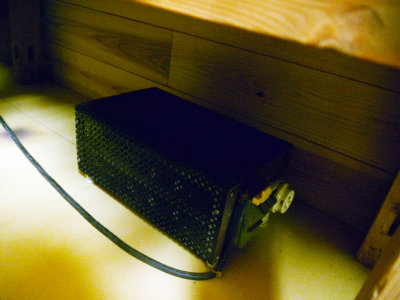
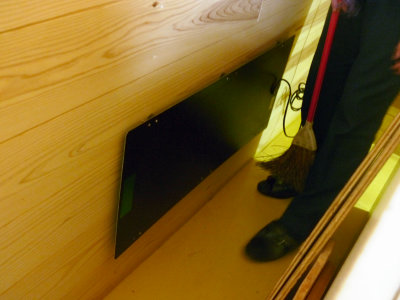
We bring two ends of the cloth by two people and carry the rice onto a big desk and spread it.
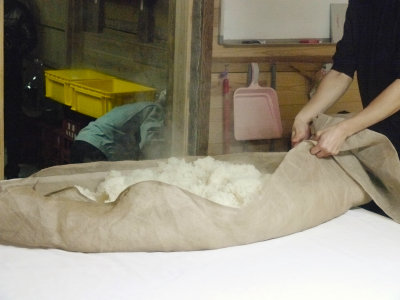

Freshly steamed rice is pretty hot, so use scales as well.
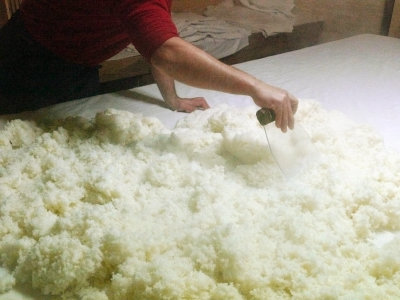
Spread parts like rice balls by hand. Before working, the clerk washes hands with soap, sprinkles alcohol and disinfects it so as not to introduce bacteria and the like.
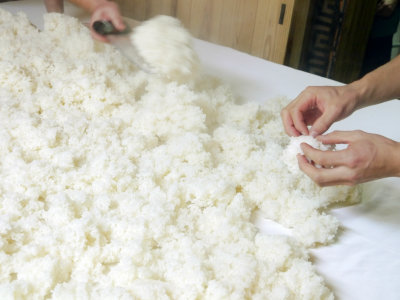
I will carry on and on.
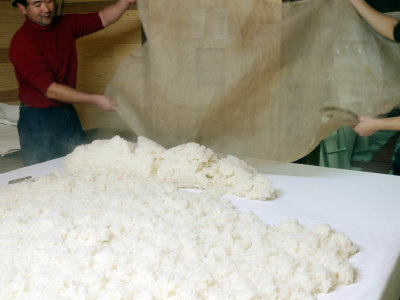
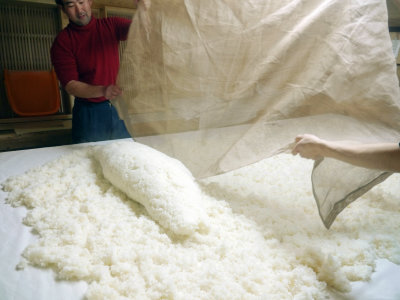
There is a window on the ceiling, so that humidity can be adjusted.
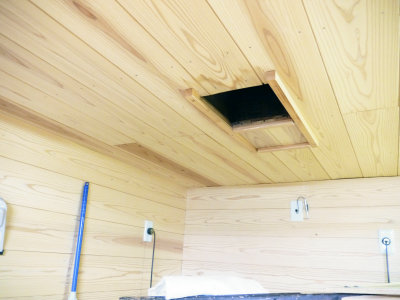
However, as this rice was pretty hot, not only the window of the ceiling, but also the door of the room which we normally closed can be opened.

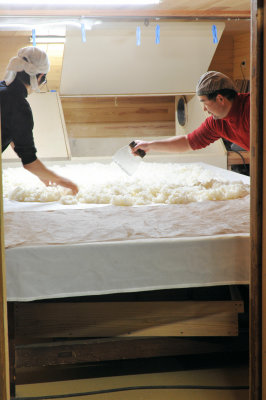
After expanding the rice in advance, measure the temperature of each part with an infrared thermometer.
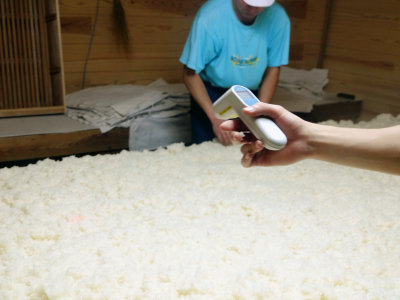
In order to lower the temperature of rice, it is covered with cloth and it cools down.
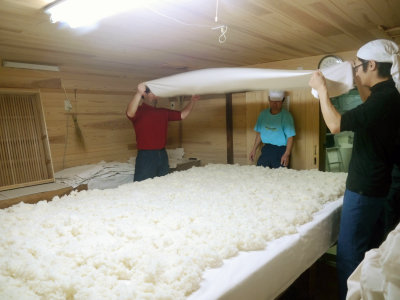
Cool down one piece and clump the rice with the cloth laid under. By the way, the total weight of this rice is 108 kg, it seems to be the amount of rice consumed by an average couple in a year.


Put a thermometer in the mass.
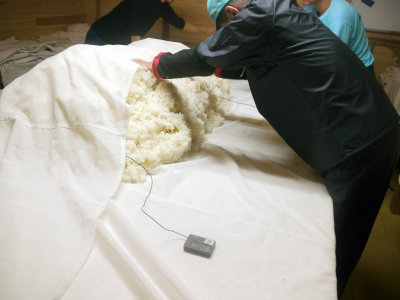
I wrapped it beautifully and left for a while.
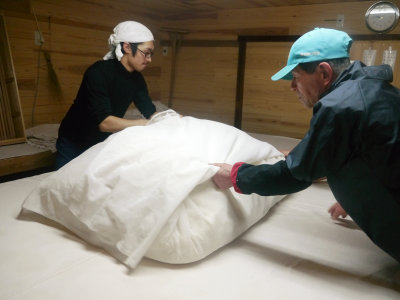
We will expand again to see if the whole temperature has become uniform.
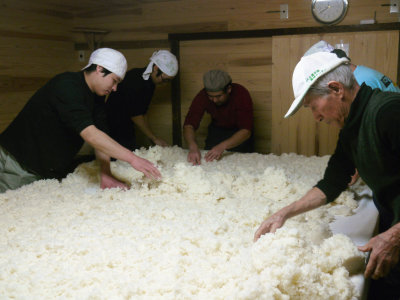
As it was still a little hot, I will recharge it with cloth.
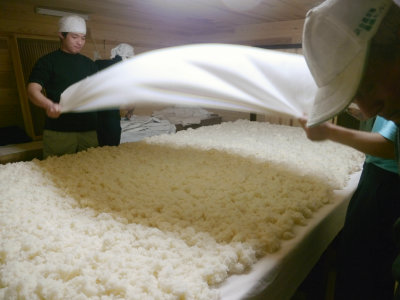
Since it got just right temperature, we are finally going through the process of sprinkling seeds, that is, sprouts to rice. In order not to shake the air, all the colleagues other than Duji stick by the corner of the room.
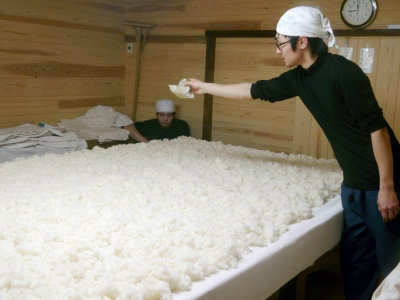
YouTube - "rice seed" for making rice koji
Rice after breeding. Although it does not understand a bit in appearance, particles of sprouts are attached to the surface.
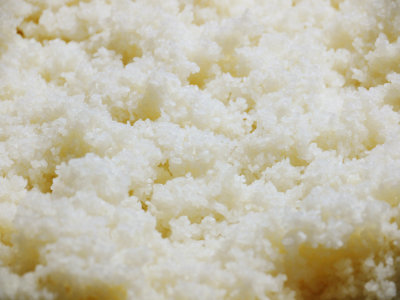
Finally the surface finishes at last. Next turn over the rice and seed the back side.
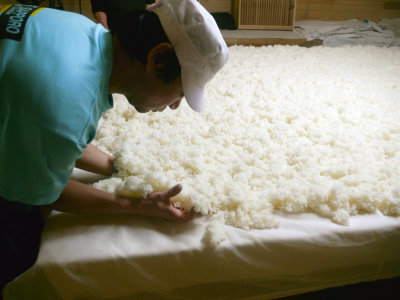
Cool the rice with blue ... ...
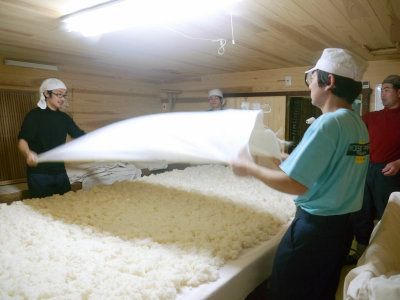
Seed again. Only the sound which shakes the shara-shara and bean sprouts in the room.

We sorted rice so we finished seeding on both sides.
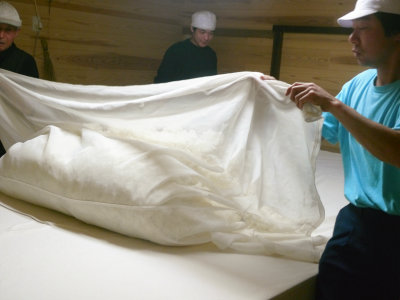
Come wearing it with cloth ......
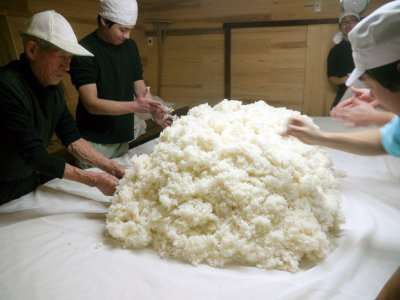
In addition, we finished working in the room at last with plenty of cloths on top. I say "work" so far, put it as it is until the next day, transfer it to a box, and leave it until koji is made in the room.


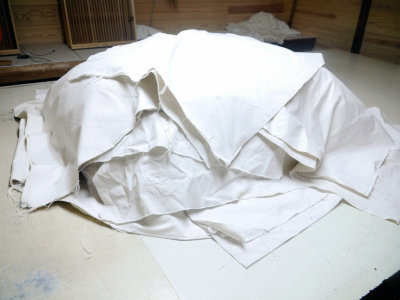
It seems that it is to keep the temperature of the whole as constant as to clump rice once spread.
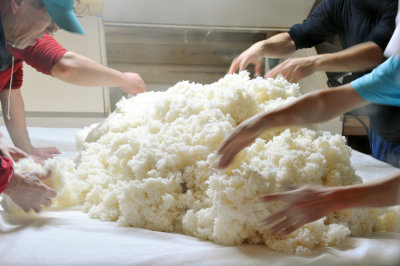
The work so far ends by noon, from the afternoon rice is not different in brand name and quantity, but it seems to go back to the work I saw in the first part. Menu includes mother-of-poo and miso soup. Hard work is supported by a solid meal.

It was completely sunny when I was about to return from the warehouse. Kyotango-shi in winter seems to be sunny, so it is a precious sunset. The delicious flavor of sake was made with the hands of people. Work is to continue until the end of March, including squeezing.
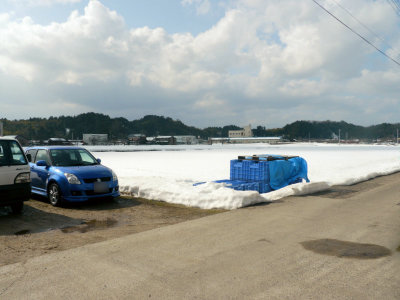
Related Posts:






